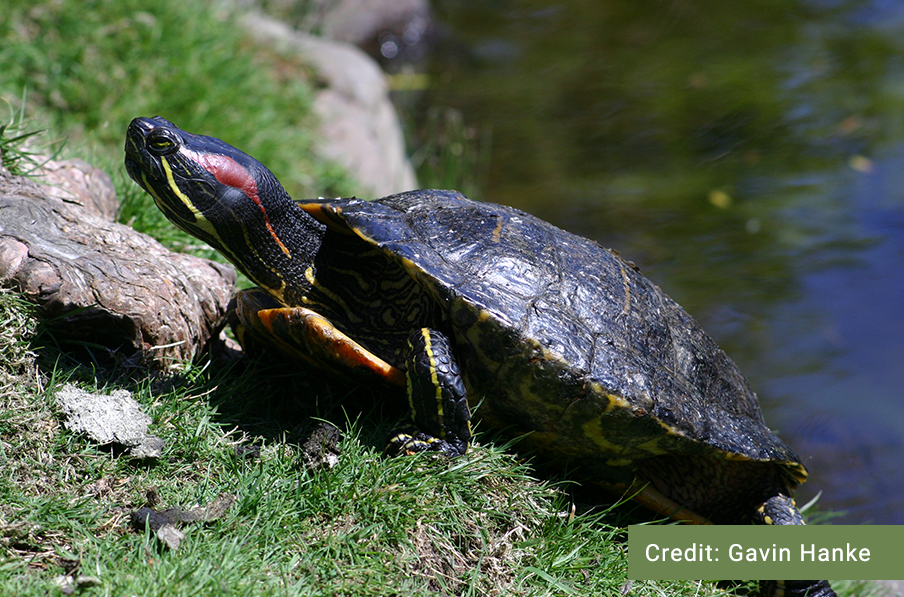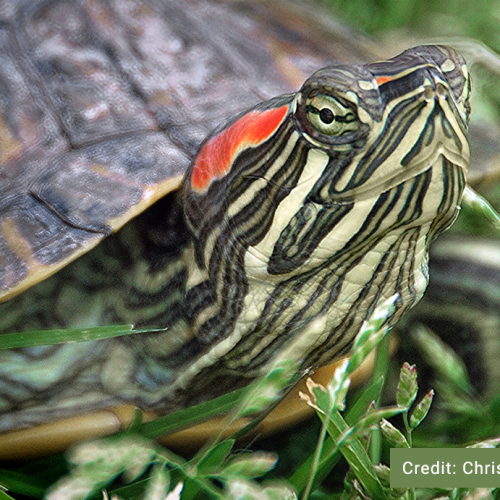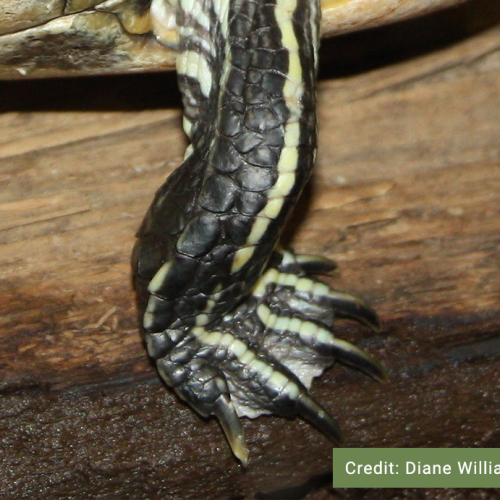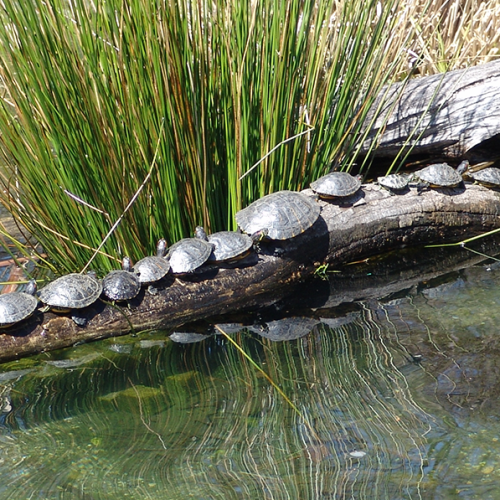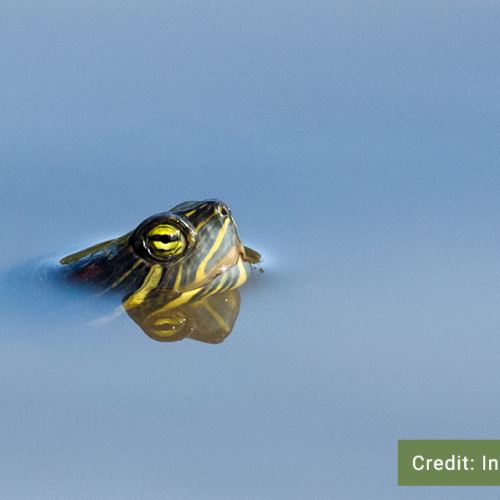Credit: J.N. Stuart
Red-eared Slider
Trachemys scripta elegans
Description
Other names: Slider, Pond Slider
The Red-Eared Slider is a medium-sized turtle reaching nearly 30 cm in carapaceDefinition:The hard upper shell of a turtle, crustacean, or arachnid. length. The carapace is smooth and typically dark olive green to black and may display dark lines, streaks, and smudges with patches of white, yellow, or red. The plastonDefinition:The nearly flat part of the shell structure on the underside of a turtle or other animal. is yellow and often marked with dark blotches. The head, neck, and limbs are striped in yellow, and a red patch or ‘ear’ behind the eye give this turtle its name. Colouration in older turtles may be subtle or not visible at all, and older males may even lose their markings completely. Males are generally smaller than females, and have especially long, curved claws that are important for courtship. Other colour morphs have been recorded, including a yellow-eared for which leads to Sliders being easily confused with Painted Turtles.
Listen to the Indigenous words for “turtle” here!
Similar Species
The Red-eared Slider may be easily confused with other similarly sized freshwater turtles such as the Western Painted Turtle and the Northwestern Pond Turtle. Red-eared Sliders can often be seen basking with Western Painted Turtles, but are easily distinguished from Painted Turtles and Pond Turtles by their red ‘ears’ for which they are named. In British Columbia Northwestern Pond Turtles are considered extirpated, so it is unlikely the two species would occur together.
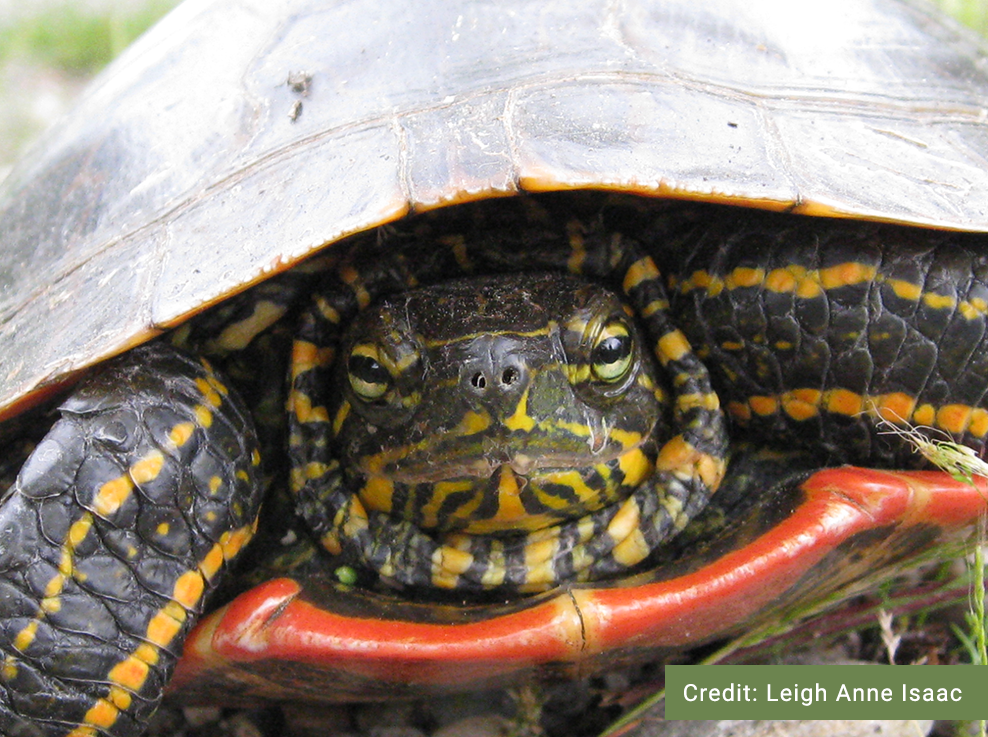
Western Painted Turtle
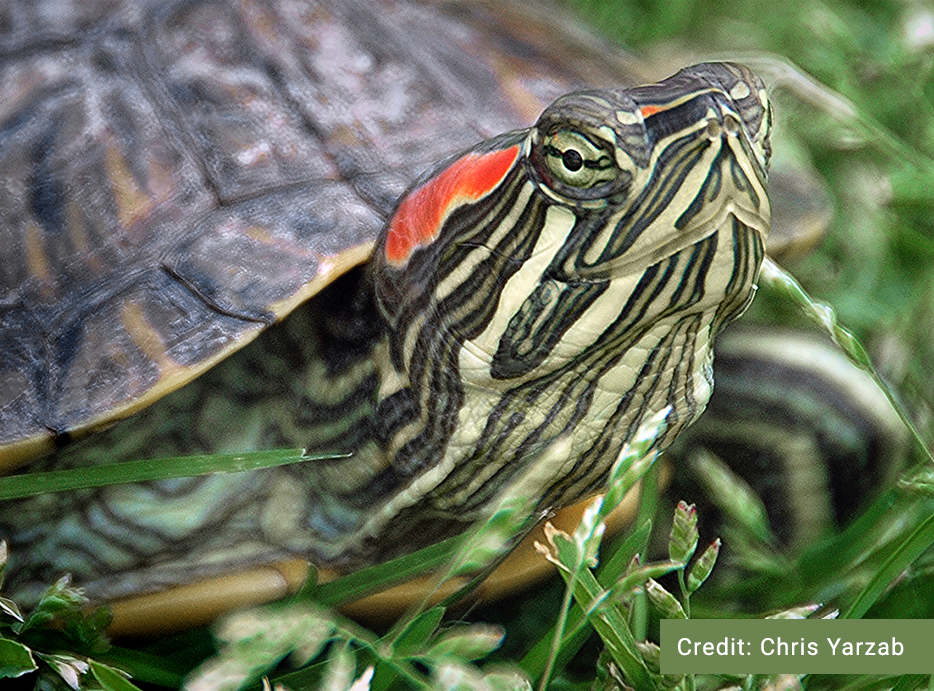
Red-eared Slider
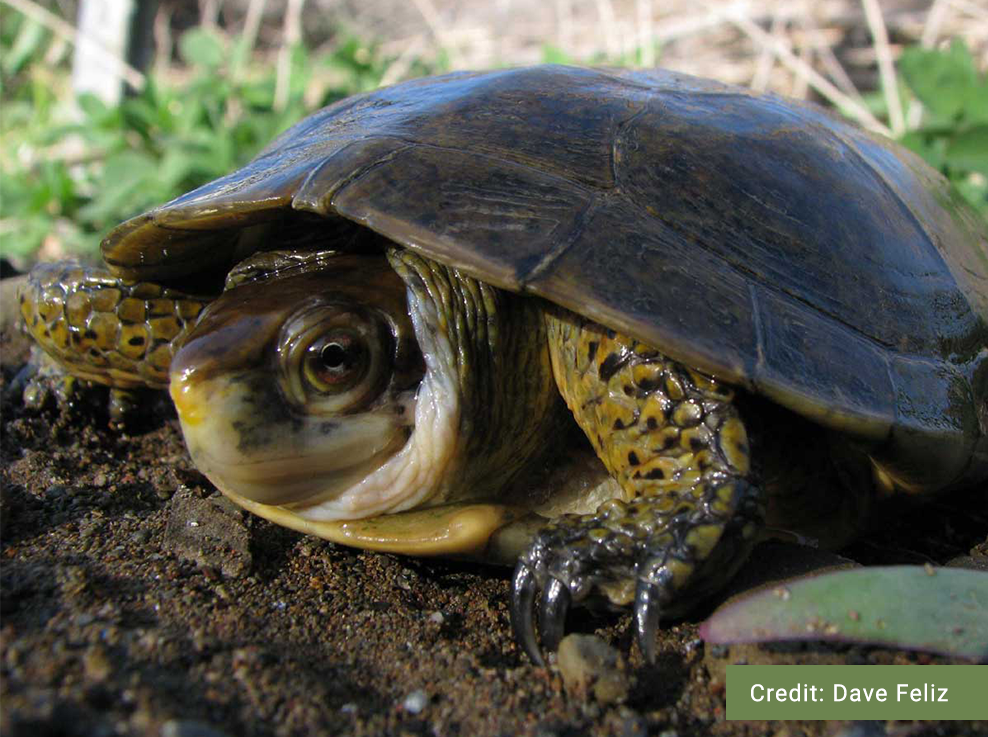
Northwestern Pond Turtle
Distribution
The Red-eared Slider is an introduced species in British Columbia with nesting populations reported in the Gulf Islands, Burnaby Lake, and sporadically in wetlands around the Greater Vancouver area, where the continuous release of pets appears to be supplementing populations. Red-eared Sliders are native to the southeastern United States, Mexico, Central America, and Brazil. Young Sliders are popular in the pet trade, however, once they grow older, care and housing for the turtles becomes more difficult, leading to people releasing them in local ponds. Release of Red-eared Sliders through the pet trade has led to introductions of the species across North America, the Netherlands, Japan, and the United Kingdom.
There are 13 recognized subspecies of Pond Slider. The Red-eared Slider (Trachemys scripta elegans) is the most common subspecies found in British Columbia.
Habitat
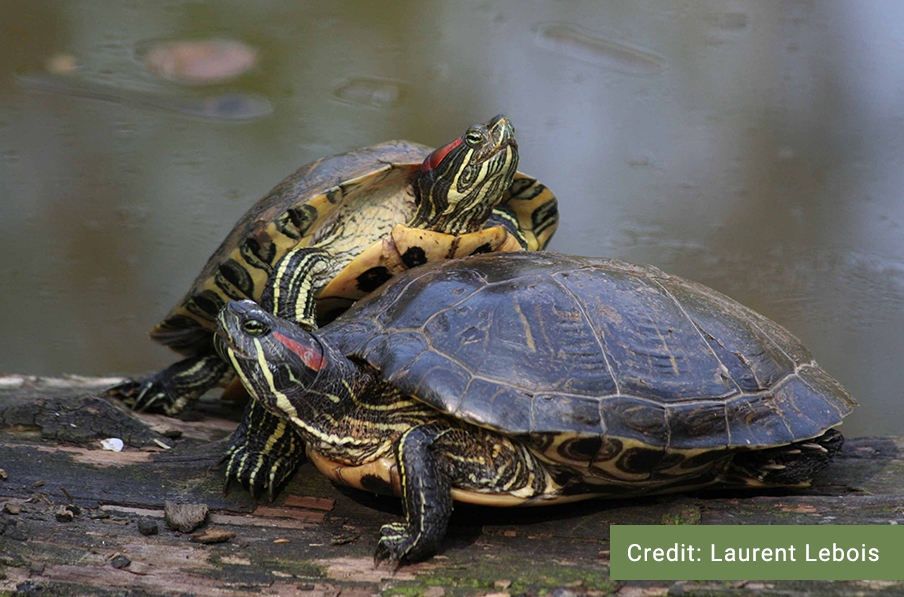
Reproduction

Diet
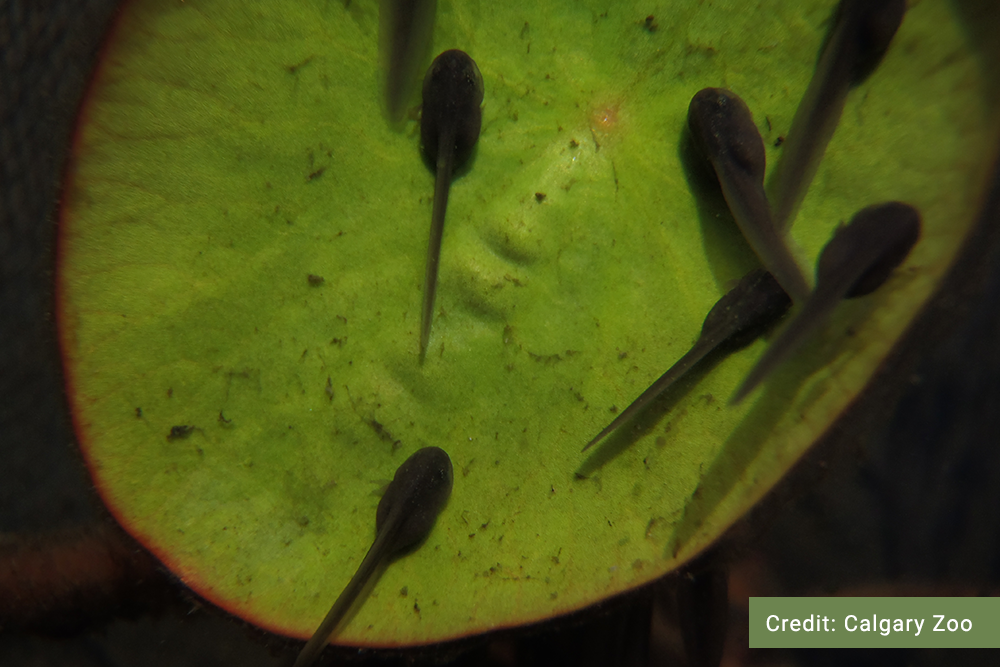
Conservation Status
Global: G5 (2005)
Provincial: SNA (2018)
BC List: Exotic
Learn more about conservation status rankings here
Threats
Biologists strongly urge that former pet turtles must not be released in local ponds. Not only may these turtles have negative impacts on our local ecosystems and native species, but it is also illegal to release pet turtles in the wild in British Columbia. People that can no longer care for their pets should seek reptile refuges or other organizations that can responsibly care for the animal.
If you see a Red-eared Slider, please report your observation to the Invasive Species Council of British Columbia.
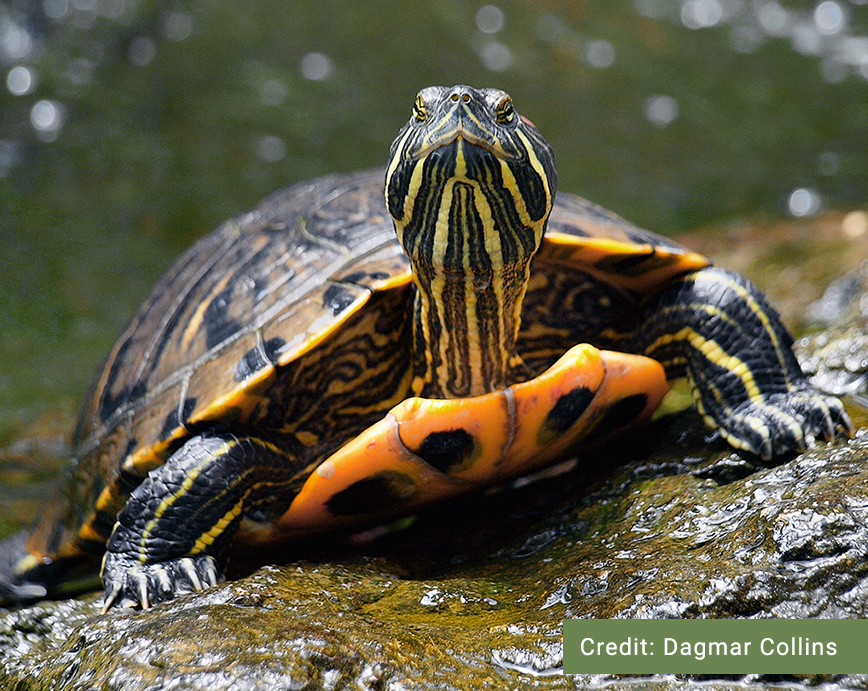
Did You Know?
Fact #1
Fact #2
Fact #3
Species Account Author: Marcus Atkins
B.C. Conservation Data Centre. 2002. Species Summary: Trachemys scripta. B.C. Minist. of Environment. Available:https://a100.gov.bc.ca/pub/eswp/ (accessed Jun 24, 2021).
B.C. Conservation Data Centre. 2021. BC Species and Ecosystems Explorer. B.C. Minist. of Environ. Victoria, B.C. Available: https://a100.gov.bc.ca/pub/eswp/ (accessed Jun 24, 2021).
http://linnet.geog.ubc.ca/efauna/Atlas/Atlas.aspx?sciname=Trachemys%20scripta&ilifeform=43
https://www.bcreptiles.ca/turtles/redearslider.htm
https://www2.gov.bc.ca/gov/content/environment/plants-animals-ecosystems/wildlife/wildlife-conservation/amphibians-reptiles/turtles

